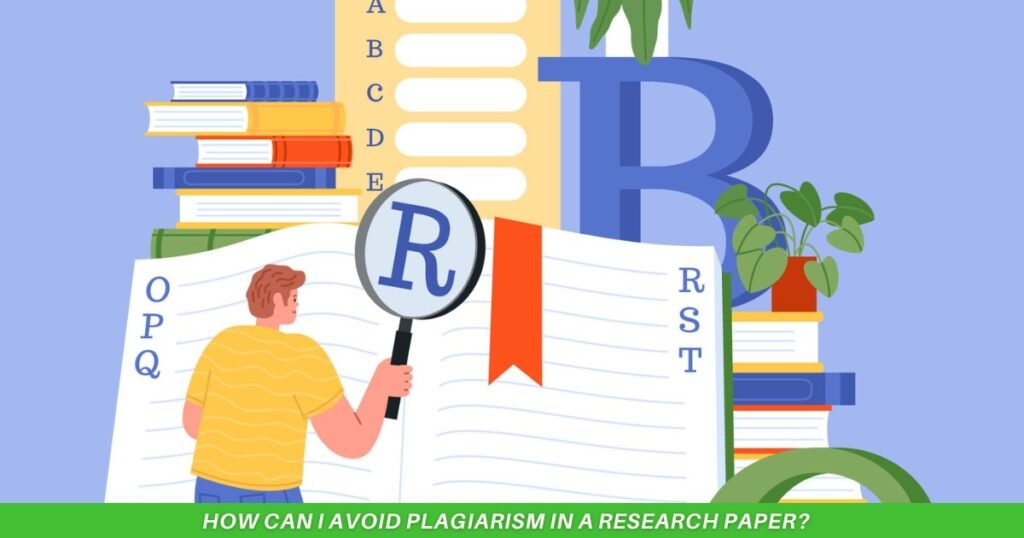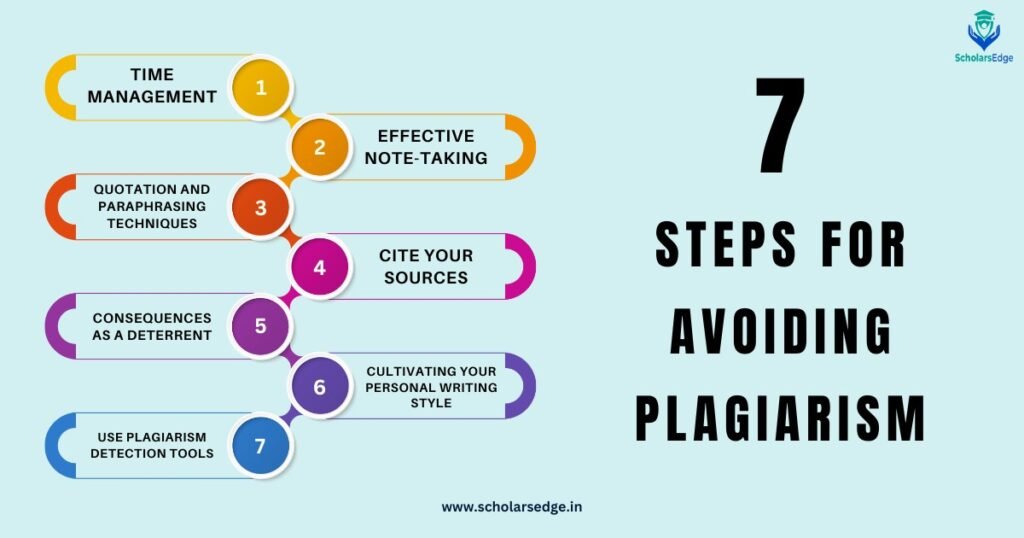
What is Plagiarism?
Plagiarism is an unethical practice of using someone else’s work as their own without acknowledging the author of the original source. These days, plagiarism has become a common problem. From SEO writers, content creators to researchers often face this issue. Let’s understand what exactly is plagiarism and how it can be avoided. Understanding plagiarism is crucial for researchers, students, and all those engaged in scholarly pursuits.
Plagiarism is a serious academic offence that should never be considered a minor form of cheating. This undermines the integrity of scholarly work. Passing off someone else’s work as your own is not only a bad practice, but it also shows that you have completely failed in your learning process. Plagiarism involves deceitfulness and violates the principles of academic integrity.
Plagiarism
- Hinders an individual’s learning process.
- If it is deliberately done, plagiarism indicates a person’s dishonesty.
- This usually results in bad writing, and plagiarised content will always be a mess.
Consequences of Plagiarism
- Universities and colleges have taken plagiarism seriously. Plagiarism allegations can destroy a student’s reputation and lead to suspension or expulsion.
- Plagiarism reports are quite common and widely reported in academia. Once an individual is scarred due to such allegations, their academic career is ruined. As publishing is a vital part of an academic career, plagiarism accusation will not only destroy the chances of publishing but also end their academic position.
- If caught and found guilty of plagiarisation, there are legal consequences, too. It breaches copyright laws, especially copyright infringement, if the student submits the data on his own. In the worst cases, it could also become a criminal offence.
- If the author of the original content sues the plagiarist, there can be monetary repercussions. The offender might have to pay a penalty.
Types of Plagiarism
There are various forms of plagiarism, ranging from deliberate copying to subtle misrepresentation. Therefore, it is important to know the different types of plagiarism to avoid unintentional violations.
- Direct Plagiarism: This straightforward form of plagiarism, where word-for-word transcription of someone else’s work is directly copied from the source without attribution or alteration. Such copy-and-paste plagiarism is a clear violation of academic ethics.
- Mosaic Plagiarism: Also, called ‘Patchwriting’ occurs when a writer rephrases paragraphs or sentences from various sources to create new content, often without proper citation or giving credit. However, it is deceptive and unacceptable.
- Self-plagiarism: This happens when one reuses their own work from earlier published content without acknowledging that it was from their previous work.
- Collusion: Two or more people can get into an agreement and submit one’s work as the work of another without proper acknowledgement. Such plagiarism is known as collusion.
- Incomplete Plagiarism: Improper citation, whether accidental or intentional, is another form of plagiarism. Omitting key information and failing to cite, quote, or attribute ideas can make it difficult to find the original source.
- Contract Cheating: When a student chooses a paid service or a favour from someone else to write for them and submits the same as their own work, it is termed contract cheating.
- Hybrid: This involves combining copied and uncited sources with cited sources. Therefore, the work includes both plagiarised and original sections.
7 Steps for Avoiding Plagiarism

The ramifications of plagiarism are extensive, and no one is immune to it. One cannot give ignorance or stature excuses to avoid the legal consequences of plagiarism. Therefore, whether you are a seasoned researcher or a student, it is crucial to understand how to avoid plagiarism in a research paper to maintain academic integrity.
Listed below are 7 strategies that you must follow to steer clear of plagiarism and produce high-quality and original research papers.
1. Time Management
One of the reasons why research students use plagiarism is that copy-paste is quicker than creating their own original work. Writing is a time-consuming task and calls for a lot of dedication. Procrastination is one of the factors that contribute to plagiarism, as research students may be tempted to take shortcuts due to tight deadlines. Therefore, meticulously planning your research and writing schedule is important to avoid last-minute rushes.
2. Effective Note-Taking
This is another important way to avoid plagiarism. Take careful notes as you conduct research on your paper. Use apps (Notability, Microsoft OneNote, Apple Notes, Google Keep, etc.) to write down and store your notes. You can also use a paper notebook or index card if you can conveniently do it.
Get all the information such as –
- Book or Journal Title
- Volume
- Date
- Name of the author
- Page Numbers
- Publisher, etc.
You will need all of these to cite later. This practice will not only help in proper citation but also help you will be able to understand the material. You do not have to rely excessively on external sources by doing this.
3.Quotation and Paraphrasing Techniques
Direct Quotation makes it clear that the sentence or paragraph is not your own. This is one of the simplest ways to avoid plagiarism. Make sure to surround the verbatim (word for word) passages by quotation marks as it signals that it belongs to another author.
Paraphrasing rules are currently much stricter. Paraphrasing involves expressing ideas or statements in one’s own words. However, there is no clear agreement on how many words can overlap with the original source before a paraphrase becomes plagiarised.
Note down, if something is ‘lightly paraphrased’ (some of the text is similar to the original). In this way, you can deeply paraphrase it before including it in your paper. Balancing these techniques ensures that your thoughts are interlaced with external information, ensuring that an authentic scholarly tone is maintained in your writing.
4. Cite Your Sources
Every time you paraphrase or quote a passage, you must cite your sources to clearly identify the original author. Proper citations are the cornerstone of academic writing. Mastering citation styles such as Chicago, MLA, and APA is crucial. Equip yourself with the knowledge of citing online resources, traditional books, multimedia, and other sources, as it will help you give your credit where it is due. Accurate citations will prevent plagiarism and improve the credibility of your work.
5.Consequences as a Deterrent
It is crucial to understand the potential consequences of plagiarism, as it serves as a powerful deterrent. Legal ramifications, academic penalties, and damage to reputation are implications of plagiarism. Keeping these nuances of plagiarism in mind will significantly motivate you to adhere to ethical writing practices.
6.Cultivating Your Personal Writing Style
Developing a unique writing style and voice is not only creative but also helps avoid plagiarism. Experimenting with different techniques and formats will help hone writing skills. Focus on articulating your thoughts in a manner that reflects your understanding of the subject matter. This will contribute to the originality of our work.
7. Use Plagiarism Detection Tools
If you are not sure about your paraphrasing or writing skills, then it becomes mandatory to use plagiarism-checking software. This will ensure that any passages in your manuscript are plagiarised, and if you find such passages, you can take timely action. Although not foolproof, such plagiarism detection tools do provide an additional layer of scrutiny to help writers identify any accidental instances of plagiarism before submitting their work.
Conclusion
In conclusion, plagiarism in its multifaceted forms poses a significant threat to the credibility of both institutions and individuals. Understanding plagiarism, its consequences, and adopting proactive strategies are some of the essential components to follow for responsible scholarly conduct. The ultimate goal of the research student should be to contribute meaningfully to the legacy of the Academic Institution. The conscientious application of the strategies mentioned above will not only help prevent plagiarism but also enhance the authenticity and quality of scholarly contributions.
FAQs: Steps to Avoid Plagiarism in a Research Paper
What is plagiarism explain in detail?
Plagiarism is the act of presenting someone else’s work as your own without giving them proper credit. It leads to serious consequences like academic penalties, legal ramifications and damaging one’s reputation.
How can plagiarism usually be avoided?
A combination of effective research skills, ethical practices and commitment to academic integrity can help avoid plagiarism.
What is the difference between summarizing and paraphrasing?
Summarizing and paraphrasing techniques serve different purpose in scholarly writing.
In summarizing, the main points of the text are condensed while retaining the essential ideas. Its an overview of the original work.
Paraphrasing involves rephrasing a specific text in your own words without altering the original meaning.
Is it possible to accidentally plagiarize? How do I prevent it?
Unintentional plagiarism occurs, especially when one lacks understanding about proper citation practices.
How do I effectively balance originality and citations in my research to avoid plagiarism?
Expressing your own insights, developing a solid understanding of the subject matter, using citations judiciously, engaging in critical analysis, careful paraphrasing, regularly reviewing and revising your work will help you navigate the delicate balance between originality and citations.
